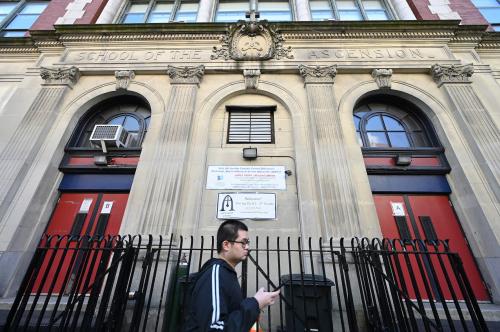There was a time when student test scores primarily concerned two groups: individual parents, as they received reports on their children’s progress, and real estate agents, as they helped home buyers compare schools in different neighborhoods. Test scores were difficult to obtain and rarely discussed in public.
But now measures of student achievement are splashed across the front page of major newspapers, widely available on the Internet, and the subject of intense scrutiny and furious spin. Politicians closely watch test scores. From the race to the White House to the thousands of contests for local school boards, candidates stretch and bend scores to make them look as good or as bad as possible. Teachers unions and other organizations cite data to defend public schools and assure the public that all is well–or at least not as bad as everyone thinks. On the other side, critics of public schools publish voluminous studies documenting a steady decline in student performance.
What should the average citizen believe?
The purpose of this report is four-fold: to report on the direction of achievement in U.S public schools, that is, to determine whether it’s going up, down, or sideways; to figure out whether any change that is detected is big, small, or insignificant; to dig under the numbers and uncover the policies and practices influencing the direction of student achievement; and, finally, to figure out whether the public is getting the full story on student learning. Americans spend $350 billion each year on elementary and secondary education. They deserve an accurate, non-partisan, no-holds-barred, data-driven account of what they’re getting for their money.
The Brown Center Report will appear annually, this being the first edition. Although varying in content from year to year, the report will be presented in the same three sections. The first section will use the latest and best evidence available to evaluate student achievement in America?s schools. The second section will go into greater depth on a theme related to student learning. This year?s theme is mathematics achievement. The third section will evaluate the impact of policies and practices on student learning. This year?s topics are the use of calculators in math instruction and state and federal programs that single out exemplary schools for special recognition.
The Brookings Institution is committed to quality, independence, and impact.
We are supported by a diverse array of funders. In line with our values and policies, each Brookings publication represents the sole views of its author(s).



